What is a Spinal Cord Injury?
A Spinal Cord Injury ( SCI ) is damage to the spinal cord nerve that results in a loss of body function, such as mobility / waking and/or loss of feeling / sensation. Frequent causes of spinal cord injuries are trauma (car or bike accident, gunshot, falls, etc.) or disease (polio, spina bifida, Friedreich’s ataxia, etc.).
The most people a loss of body function or sensation or loss of both body functions and sensation occurs. In fact, in most people suffering spinal cord injury, the cord is intact, but the damage to it results in loss of body functions.
Some most causes/results of spinal cord injury:-
- An accident ( Car, Bike, etc.)
- Diving into water that’s too shallow and hitting the bottom ( Swimming pool, Sea, River, etc.)
- Falling from a significant height
- Spinal injuries during sporting events
- A violent attack such as a stabbing or a gunshot
- Electrical accidents
Read more about “Spinal Cord Injury”
 A Spinal Cord Injury is damage or broken to the spinal cord nerve that causes permanent or temporary changes in its body functions. The Symptoms may include loss of muscle functions, “Feeling / Sensation”, or autonomic function in the parts of the body served by the spinal cord below the level of the injury. Injury can occur at any level of the spinal cord and can be complete, with a total loss of body sensation, uncontrol of bowel and bladder and muscle functions at lower sacral segments, or incomplete, meaning some nervous signals are able to travel past the injured area of the cord nerve up to the Sacral S4-S5 spinal cord segments. Depending on the location and severity of the damage, the symptoms vary, from numbness to paralysis, including bowel or bladder incontinence. Long-term outcomes also range widely, from full recovery to permanent “Tetraplegia” (also called “Quadriplegia”) or Paraplegia. The Complications can include muscle atrophy, loss of voluntary motor control, spasticity, pressure sores, infections, and breathing problems.
A Spinal Cord Injury is damage or broken to the spinal cord nerve that causes permanent or temporary changes in its body functions. The Symptoms may include loss of muscle functions, “Feeling / Sensation”, or autonomic function in the parts of the body served by the spinal cord below the level of the injury. Injury can occur at any level of the spinal cord and can be complete, with a total loss of body sensation, uncontrol of bowel and bladder and muscle functions at lower sacral segments, or incomplete, meaning some nervous signals are able to travel past the injured area of the cord nerve up to the Sacral S4-S5 spinal cord segments. Depending on the location and severity of the damage, the symptoms vary, from numbness to paralysis, including bowel or bladder incontinence. Long-term outcomes also range widely, from full recovery to permanent “Tetraplegia” (also called “Quadriplegia”) or Paraplegia. The Complications can include muscle atrophy, loss of voluntary motor control, spasticity, pressure sores, infections, and breathing problems.
In the majority of cases the damage results from physical trauma such as car or bike accidents, gunshot wounds, falls, or sports injuries, but it can also result from nontraumatic causes such as infection, insufficient blood flow, and tumours. Just over half of injuries affect the Cervical Spine, while 15% occur in each of the Thoracic Spine, the border between the Thoracic and Lumbar Spine, and the Lumbar Spine alone. Diagnosis is typically based on symptoms and medical imaging.
Efforts to prevent Spinal Cord Injury include individual measures such as using safety equipment, societal measures such as safety regulations in sports and traffic, and improvements to equipment. Treatment starts with restricting further motion of the spine and maintaining adequate blood pressure. Corticosteroids have not been found to be useful. Other interventions vary depending on the location and extent of the injury, from bed rest to surgery. In many cases, “Spinal Cord Injuries” require long-term physical therapy and occupational therapy, especially if it interferes with activities of daily living. Also, patients need Rehabilitation training after injury.
In the United States, about 12,000 people a year survive a spinal cord injury. The most commonly affected group are young adult males.SCI has seen great improvements in its care since the middle of the 20th century. Research into potential treatments includes stem cell implantation, hypothermia, engineered materials for tissue support, epidural spinal stimulation, and wearable robotic exoskeletons.
What are The Types of Spinal Cord Injuries?
Spinal cord injuries can be complete or incomplete:
Complete: A complete injury causes total paralysis (loss of function) below the level of the injury. It affects both sides of the body. A complete injury may cause paralysis of all four limbs (quadriplegia) or the lower half of the body (paraplegia).
Incomplete: After an incomplete injury, If you have some motor or sensory function below the affected area, your injury is called incomplete. The body and brain can still communicate along certain pathways. There are varying degrees of incomplete injury.
Additionally, paralysis from a spinal cord injury can be referred to as:
Tetraplegia. Also known as quadriplegia, this means that your arms, hands, trunk, legs and pelvic organs are all affected by your spinal cord injury.
Paraplegia. This paralysis affects all or part of the trunk, legs and pelvic organs.
Your healthcare team will perform a series of tests to determine the neurological level and completeness of your injury.
Spinal cord injuries can cause one or more of the following signs and symptoms:
- Loss of movement
- Loss of or altered sensation, including the ability to feel the heat, cold and touch
- Loss of bowel or bladder control
- Exaggerated reflex activities or spasms
- Changes in sexual function, sexual sensitivity and fertility
- Pain or an intense stinging sensation caused by damage to the nerve fibers in your spinal cord
- Difficulty breathing, coughing or clearing secretions from your lungs.
Emergency Signs and Symptoms
Emergency signs and symptoms of a spinal cord injury after an accident include:
- Extreme back pain or pressure in your neck, head or back
- Weakness, incoordination or paralysis in any part of your body
- Numbness, tingling or loss of sensation in your hands, fingers, feet or toes
- Loss of bladder or bowel control
- Difficulty with balance and walking
- Impaired breathing after injury
- An oddly positioned or twisted neck or back
Your Brain and Central Nervous System
The central nervous system comprises the brain and spinal cord. The spinal cord is made of soft tissue and surrounded by bones (vertebrae). It extends down from the base of your brain and contains nerve cells and groups of nerves called tracts, which go to different parts of your body.
The lower end of your spinal cord stops a little above your waist in the region called the conus medullaris. Below this region is a group of nerve roots called the cauda equina.
Tracts in your spinal cord carry messages between your brain and the rest of your body. Motor tracts carry signals from your brain to control muscle movement. Sensory tracts carry signals from body parts to your brain relating to heat, cold, pressure, pain and the position of your limbs.
Damage to Nerve Fibers
Whether the cause is traumatic or nontraumatic, the damage affects the nerve fibers passing through the injured area and can impair part of or all the muscles and nerves below the injury site.
A chest (thoracic) or lower back (lumbar) injury can affect your torso, legs, bowel and bladder control, and sexual function. A neck (cervical) injury affects the same areas in addition to affecting movements of your arms and, possibly, your ability to breathe.
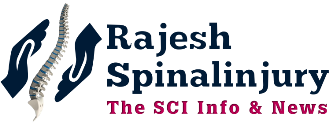



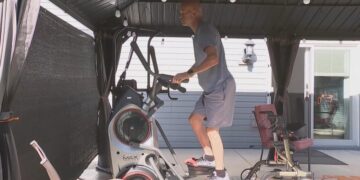
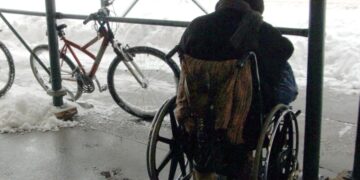

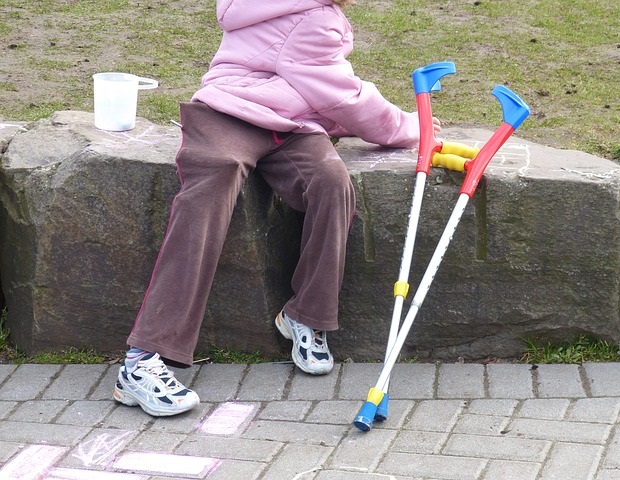
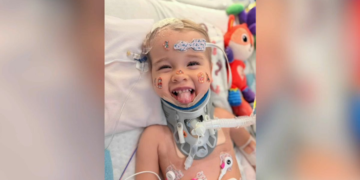
_6e98296023b34dfabc133638c1ef5d32-620x480.jpg)
